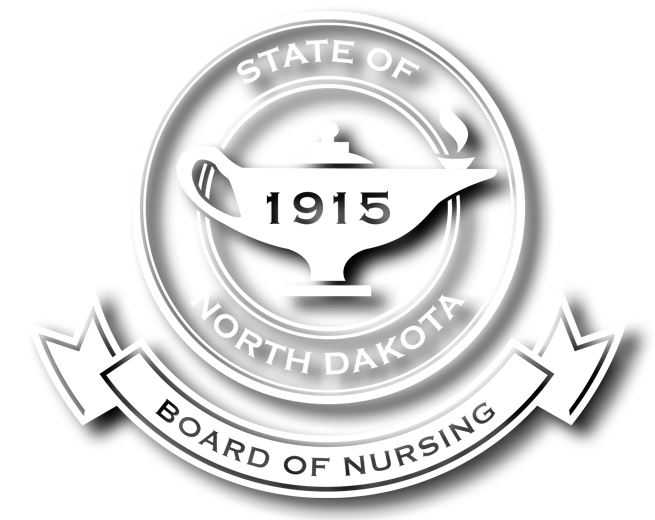- Home
- Practice
- Practice Guidance
- Opioid Joint Statement by ND TRC
ND Tri-Regulator Position Statement on Opioid Prescribing/Dispensing
Jointly Developed by:
ND Board of Medicine
ND Board of Nursing
ND Board of Pharmacy
The Tri-regulatory Boards of Medicine, Nursing, and Pharmacy recognize that appropriately prescribed medications are an integral part of the medical care of patients who are dealing with acute or chronic pain. The Boards are aware that prescription drug misuse continues to be a significant issue throughout the healthcare industry. To address this issue, the boards have adopted a joint statement on pain management. This statement is not a substitute or replacement of standards of care, rather, it outlines proactive efforts that we expect from our licensees to help ensure safe and effective pain management.
In order to balance the risk of potential misuse with legitimate pain control, all healthcare professionals should, as their scope of practice allows, perform the following:
- Uphold their professional obligation to pursue educational opportunities to further their knowledge on standards of care and evidence-based approaches to pain management including, but not limited to, the CDC opioid prescribing guidelines (2016).
- Document appropriate pain evaluation and management approach in the medical record of the patient.
- Consider non-medication and multi-modality therapeutic approaches to care as the first- line treatment, when appropriate.
- Utilize the North Dakota Prescription Drug Monitoring program as a tool to help make informed decisions. The PDMP can aid in monitoring a patient’s past pharmacologic treatment and identifying other providers involved in the patient’s care, which can foster collaboration.
- Consider a trial of a non-opioid medication at the lowest effective dose when medication therapy is deemed necessary prior to an opioid. If an opioid is necessary, start at lowest effective dose. Avoid combining opioids with other central nervous system depressants (ex. benzodiazepines) when possible.
- Work with patients in setting realistic pain goals that are agreeable to both practitioner and patient.
- Educate patient, their caregivers and family about the risks and side effects associated with opioid therapy. Particular attention should be given to risk of addiction and side effects associated with central nervous system depression including respiratory depression and sedation.
- Discuss with patients the effect their medical condition and medication use may have on their ability to safely operate a vehicle in any mode of transportation. [NTSB Recommendation]
- Evaluate the patient’s risk for opioid overdose and prescribe an opioid antagonist (naloxone) as necessary. If naloxone is prescribed, ensure caregivers and family of patient understand how to administer medication.
- Educate patient on appropriate storage and disposal of opioid to limit risk of diversion.
- Develop policies and protocols for staff that are specific to pain management in the patient care setting to assure clinical vigilance in continuation of care.
- Refer patients to other providers, such as treatment specialists, when appropriate.

